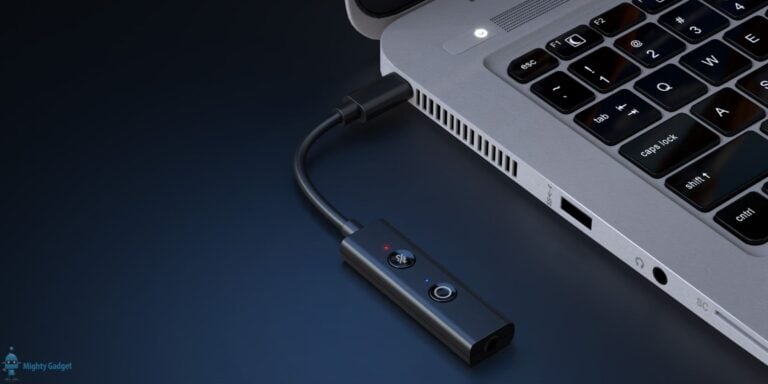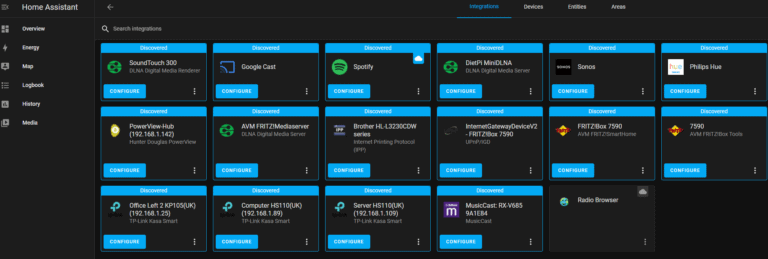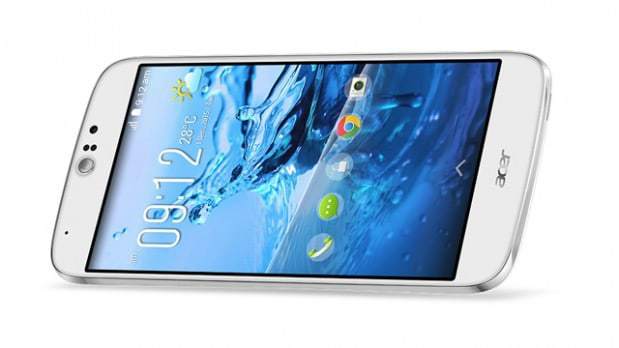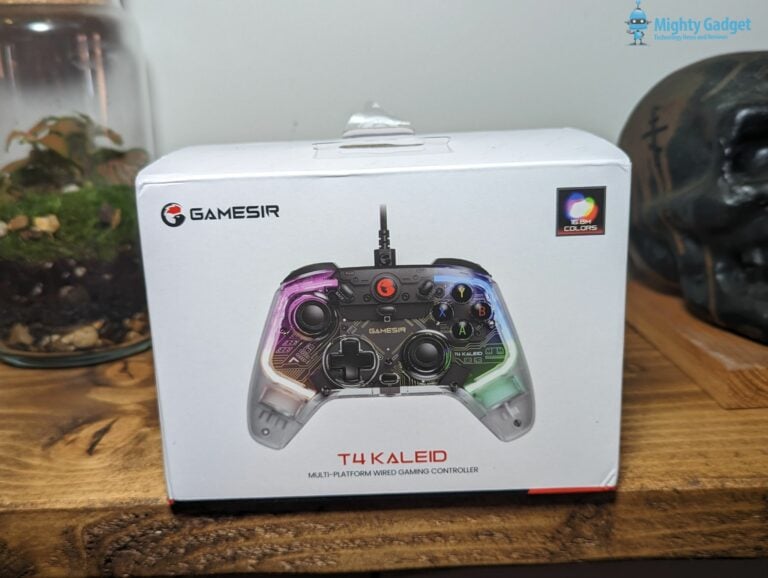Any links to online stores should be assumed to be affiliates. The company or PR agency provides all or most review samples. They have no control over my content, and I provide my honest opinion.
In the UK, EE was the first network to support eSIM, beginning with the Apple Watch Series 3 Cellular model in late 2017. EE later extended eSIM support to other devices, such as iPhones, in late 2018.
Other UK networks, such as Vodafone and O2, introduced eSIM support in the years following, offering compatibility with various smartphones, tablets, and wearable devices.
In recent years, all iPhones have supported eSIM, and most upper mid-range to flagship Android phones support eSIM. This includes devices from Samsung, Google, Honor, OPPO, Xiaomi and more.
What is an eSIM?
An eSIM, or embedded SIM, is a digital SIM card that’s built into a device and can be programmed to activate a cellular plan without having to use a physical SIM card.
The “e” in eSIM stands for “embedded” – it’s embedded in your device, you don’t need to insert anything into your phone’s SIM card slot. The eSIM technology is very convenient because it allows you to change carriers or plans without needing to physically swap SIM cards.
eSIMs are supported by various smartphones, tablets, and wearables. For example, some models of iPhone, Google Pixel, and Samsung Galaxy devices support eSIMs, as do Apple Watch and some iPad models.
One notable feature of eSIM technology is that it can enable dual SIM functionality on devices. This means you can have two different phone numbers or even two different providers on one device. This is particularly useful for individuals who travel frequently or those who prefer to keep their personal and work numbers separate.
However, not all mobile network operators support eSIM technology, so it’s important to check with your specific carrier for availability and compatibility.
Most upper mid-range and flagship Android phones that launch nowadays support eSIM. For example, the new Honor 90 supports it, but the more affordable Honor 90 Lite does not.
All Apple iPhones have supported it since the iPhone XS, which came out in 2018.
Which UK networks offer eSIM support?
Several UK mobile networks offer eSIM support.
Here are some UK networks that support eSIM:
- EE: EE offers eSIM on certain devices, including some iPhones, iPads, and Samsung Galaxy devices.
- O2: O2 supports eSIM on a range of devices, including some iPhones and Samsung Galaxy models.
- Vodafone: Vodafone also offers eSIM support on certain compatible devices.
- Three: Three were a little slow to roll out eSIM support, but you can now get it by taking one of their Three Your Way plans. They do not currently support eSim on pay as your go
Mobile network operator eSIM options
Mobile network operators tend to offer the best value for money SIM only plans, especially if you want a monthly rolling contract.
At the time of writing, only a small number of these companies offer eSIMs.
This includes:
Lyca Mobile eSIM Support
Lyca Mobile offers full eSIM support across all their plans, covering both Pay As You Go and Pay Monthly options. To acquire an eSIM, you simply need to choose it as an option when checking out.
Lyca Mobile’s eSIM is compatible with most devices that have eSIM capability, including all iPhone models from the iPhone XS and newer. For additional information on Lyca Mobile’s eSIMs, you can visit the eSIM help page on the Lyca Mobile website.
Virgin Mobile eSIM Support
Virgin Mobile provides eSIMs to all Pay Monthly clients possessing compatible devices. New customers can obtain an eSIM when they sign up online or by calling 0800 052 0422.
For existing customers, an eSIM request can be made by:
- With your old SIM in your phone, text READY to 789678
- Wait for a text telling you to switch your SIM over
- Turn off your phone and remove your old SIM.
- Once you’ve popped out the right size SIM, slide it into your phone.
- Turn your phone back on. Enter 7890 if you’re asked for a PIN
- Look out for a text confirming that you’re up and running
- Try restarting your mobile if you don’t get this text. It might take up to 10 minutes for the new SIM to register on the network
It’s crucial to mention that numerous customers have reported difficulties when switching to eSIM, as observed in the company’s forums, with existing customers appearing to encounter the most issues. It’s important to be aware that Virgin Mobile is in the process of transitioning all its customers to O2 plans, which also support eSIMs.
As of the last update, the list of officially supported devices is somewhat limited and can be viewed here. For more details, please visit the eSIM help page on the Virgin Mobile website.
BT Mobile eSIM Support – Business users only
BT Mobile is no longer available for new customers to buy.
Currently, BT business mobile advertises mobile networks and eSIM support. They have always used EE as for the network, but it now seems like they redirect all enquiries directly to EE.
Alternative eSIM providers – Global eSIM companies
There are some specialist eSIM providers that allow you to easily buy an eSIM. These companies typically specialise in selling eSIMs globally and are ideal for when you travel abroad. However, they rarely provide good value for money if you want a rolling contract.
For example, GigSky has a European plan which includes the UK, and they charge $37.99 for 10GB over 30 days. Much more expensive than a standard SIM only plan.
I use Airalo when I travel as they have an app that you can buy plans from and install the eSIM.
A 10GB 30-day plan from Airalo is $22.50.
They may not be good value for money, but when I got o the US, 10GB for 30 Days is $26. If I were to enable roaming on my iD mobile plan, it would cost me £0.30 per MB or £300 per gigabyte!!
Which UK networks don’t offer eSIMs?
Most of the MVNO networks don’t offer eSIMs, this includes:
Can I use an eSIM and physical SIM on my phone?
Yes, you can use both an eSIM and a physical SIM on your phone, but it depends on whether your phone supports dual SIM functionality with an eSIM and a physical SIM card.
With dual SIM support, you can have two different phone numbers (even on two different carriers or plans) on the same phone. This can be useful for separating personal and work calls, for travelling internationally without changing your primary SIM card, or for any other situation where you might want two separate lines on one device.
For me, I use a normal SIM for my UK network, but whenever I travel abroad, I will buy an eSIM for that country whenever I don’t get free roaming with my existing provider.
Can I get an eSIM on pay-as-you-go (PAYG) / monthly SIM only?
Yes, but it is only Lycamobile that offers a PAYG eSIM. You can apply for an eSIM only without any monthly deal and then pay 15p/MB, which is their standard national PAYG rate.
Alternatively, they offer a great range of affordable 30-day SIM only plans. The most affordable is 5GB data with:
- 1000 UK calls and texts
- 100 International minutes free
- EU Voice and data roaming included
At the time of writing (27th July 2023), this is £1.99 for the first three months, then £5 per month thereafter.
How To Set Up An eSIM
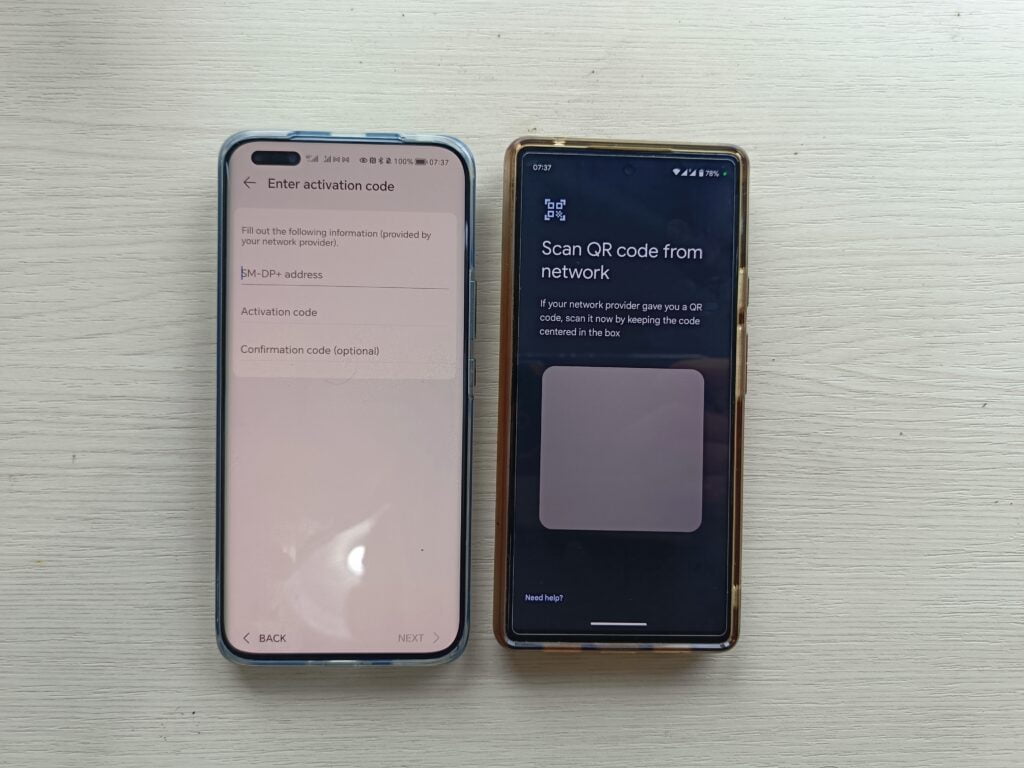
Setting up an eSIM on your device involves a few steps. However, the process may vary depending on your mobile network provider and your device model. Here’s a general guide based on information available as of my last training cut-off in September 2021:
- Check Device Compatibility: Ensure that your device is eSIM compatible. Certain models of iPhone, Google Pixel, and Samsung Galaxy support eSIMs.
- Check Carrier Support: Confirm that your mobile network operator supports eSIM functionality. Not all carriers do, and even those that do may not support it on all devices or plans.
- Request eSIM from your Carrier: If your carrier supports it, you’ll need to request an eSIM or eSIM activation from them. This often involves getting a QR Code, an activation code, or a downloadable eSIM profile. This might be done through their website, by calling, or visiting a store.
- Set up the eSIM on your device:
For iPhones (as of iOS 14):
- Go to Settings > Cellular.
- Tap “Add Cellular Plan.”
- Use your iPhone camera to scan the eSIM activation QR code provided by your carrier.
- Follow the prompts on the screen.
For Android Devices (the process may vary slightly depending on the device):
- Go to Settings and search for “eSIM” or “SIM card manager.”
- Follow the prompts to “Add network” or “Add mobile plan.”
- Scan or input the eSIM activation QR code or activation code provided by your carrier.
- Follow the prompts on the screen.
Can I use a SIM card and eSIM at the same time?

Yes, you can use both a SIM card and an eSIM at the same time, given that your device supports this feature. This is often referred to as “dual SIM” functionality.
Can I have two mobile numbers on a ‘Dual SIM with eSIM’ phone?
Yes, a ‘Dual SIM with eSIM’ phone does indeed allow you to have two different mobile numbers on the same device. The two SIMs can be from the same or different mobile network providers. This is made possible by the device’s capability to have one physical SIM card and one eSIM, each with its own mobile number.
This setup can be beneficial in several ways:
- Separate work and personal use: You can have one number for personal use and another for business, effectively separating your contacts and usage.
- International travel: You could use a local eSIM plan when traveling abroad while keeping your home country’s physical SIM, helping you to avoid expensive roaming fees.
- Leveraging different plans: You can use two different mobile network providers or plans, using each for their respective benefits (for example, one for the best call rates and another for the best data rates).
What devices support eSIM?
Most mid-range to high-end Android phones now support eSIM. For iPhone, any iPhone after the iPhone XS, iPhone XS Max, or iPhone XR. eSIM on iPhone is not offered in China mainland.
Which Apple iPhones support eSIM?
- iPhone XS
- iPhone XS Max
- iPhone 11
- iPhone 11 Pro
- iPhone SE 2 (2020)
- iPhone 12
- iPhone 12 Mini
- iPhone 12 Pro
- iPhone 12 Pro Max
- iPhone 13
- iPhone 13 Mini
- iPhone 13 Pro
- iPhone 13 Pro Max
- iPhone SE 3 (2022)
- iPhone 14
- iPhone 14 Plus
- iPhone 14 Pro
- iPhone 14 Pro Max
Which iPads have eSIM?
- iPad Pro 11″ (model A2068, from 2020)
- iPad Pro 12.9″ (model A2069, from 2020)
- iPad Air (model A2123, from 2019)
- iPad (model A2198, from 2019)
- iPad Mini (model A2124, from 2019)
- IPad 10th generation (from 2022)
Which Apple iPhones only use eSIM?
Since the iPhone 14, Apple only sells smartphones with eSIM support in the US.
It is expected that Apple will roll out this change to phones launched in Europe in 2024. This could be with the launch of the iPhone 15, or perhaps later with the iPhone 16.
Which Samsung phones support eSIM?
It is worth noting that the Samsung Galaxy S20 FE 4G/5G does not support eSIM
- Samsung Galaxy A54 5G
- Samsung Galaxy S20
- Samsung Galaxy S20+
- Samsung Galaxy S20+ 5g
- Samsung Galaxy S20 Ultra
- Samsung Galaxy S20 Ultra 5G
- Samsung Galaxy S21
- Samsung Galaxy S21+ 5G
- Samsung Galaxy S21+ Ultra 5G
- Samsung Galaxy S22
- Samsung Galaxy S22+
- Samsung Galaxy S22 Ultra
- Samsung Galaxy Note 20
- Samsung Galaxy Note 20 Ultra 5G
- Samsung Galaxy Fold
- Samsung Galaxy Z Fold2 5G
- Samsung Galaxy Z Fold3 5G
- Samsung Galaxy Z Fold4
- Samsung Galaxy Z Flip
- Samsung Galaxy Z Flip3 5G
- Samsung Galaxy Z Flip4
- Samsung Galaxy S23
- Samsung Galaxy S23+
- Samsung Galaxy S23 Ultra
Google Pixel Phones with eSIM
- Google Pixel 2 XL
- Google Pixel 3 (not including phones bought in Australia, Taiwan or Japan. Phones bought with US or Canadian carriers other than Spring and Google Fi don’t work with eSIM)
- Google Pixel 3 XL
- Google Pixel 3a (not including phones bought in Japan or with Verizon service)
- Google Pixel 3a XL
- Google Pixel 4
- Google Pixel 4a
- Google Pixel 4 XL
- Google Pixel 5
- Google Pixel 5a
- Google Pixel 6
- Google pixel 6a
- Google Pixel 6 Pro
- Google Pixel 7
- Google Pixel 7 Pro
- Google Pixel Fold
All future Pixel phones will use eSIM
Other phones with eSIM
All the big Android brands now support eSIM on many of their phones. In general, these will be for the flagship devices and the mid-range to upper mid range devices. Affordable phones tend to still just have normal SIMs.
Examples include:
- Honor Magic 4 Pro
- Honor Magic5 Pro
- Honor 90 (but not the Honor 90 Lite)
- Oppo Reno 6 Pro 5G
- Oppo Find X5
- Oppo Find X5 Pro
- Sony Xperia 1 IV
- Sony Xperia 5 IV
- Sony Xperia 1 V
- Xiaomi 12T Pro
- Xiaomi 13
- Xiaomi 13 Lite
- Xiaomi 13 Pro
I am James, a UK-based tech enthusiast and the Editor and Owner of Mighty Gadget, which I’ve proudly run since 2007. Passionate about all things technology, my expertise spans from computers and networking to mobile, wearables, and smart home devices.
As a fitness fanatic who loves running and cycling, I also have a keen interest in fitness-related technology, and I take every opportunity to cover this niche on my blog. My diverse interests allow me to bring a unique perspective to tech blogging, merging lifestyle, fitness, and the latest tech trends.
In my academic pursuits, I earned a BSc in Information Systems Design from UCLAN, before advancing my learning with a Master’s Degree in Computing. This advanced study also included Cisco CCNA accreditation, further demonstrating my commitment to understanding and staying ahead of the technology curve.
I’m proud to share that Vuelio has consistently ranked Mighty Gadget as one of the top technology blogs in the UK. With my dedication to technology and drive to share my insights, I aim to continue providing my readers with engaging and informative content.

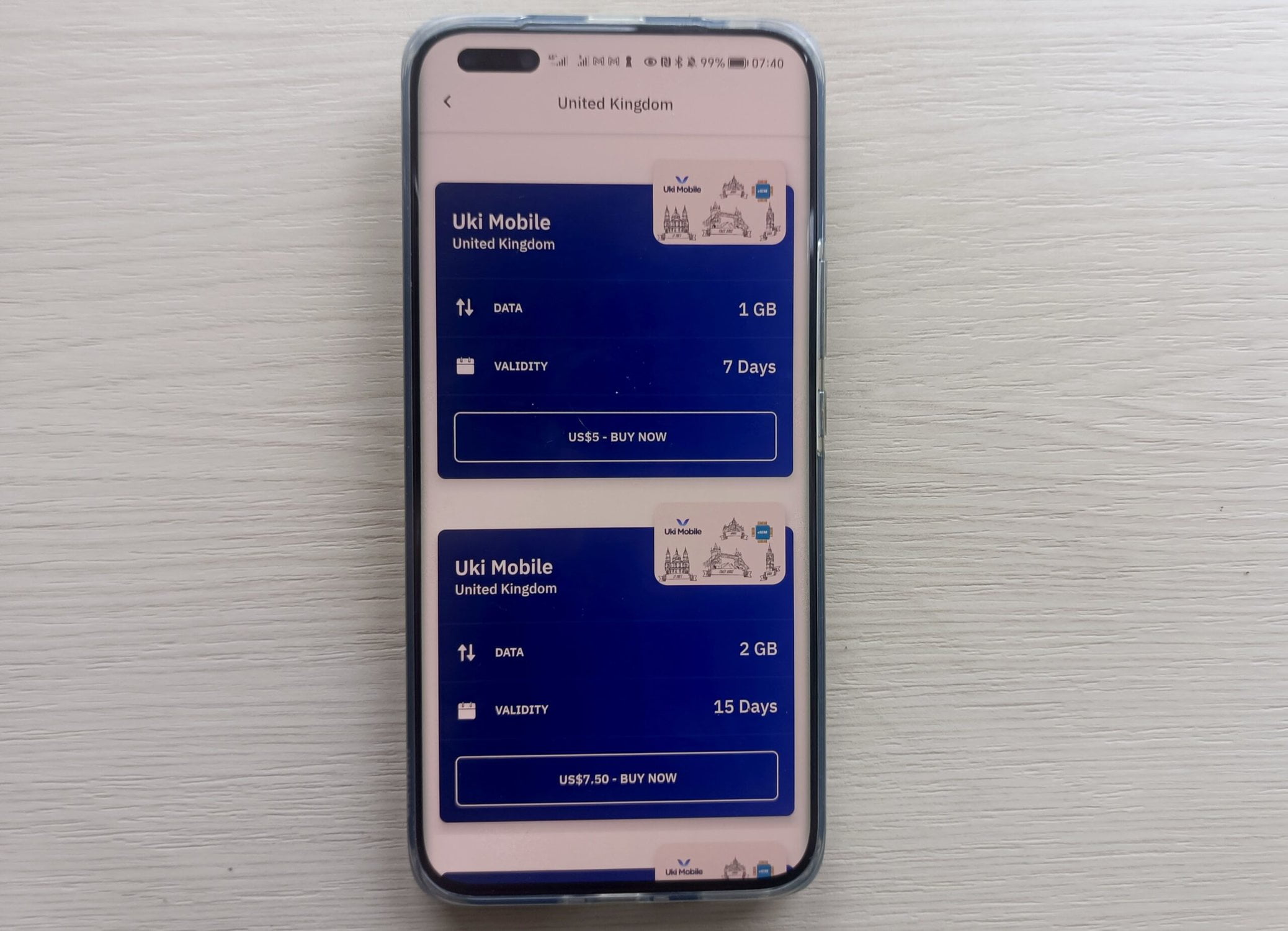
![Helium Hotspot Review – Mine Helium HNT cryptocurrency – How much money can you earn? [August 2021 Update]](https://mightygadget.com/wp-content/uploads/2020/08/Helium-Hotspot-Review-768x342.jpg)

